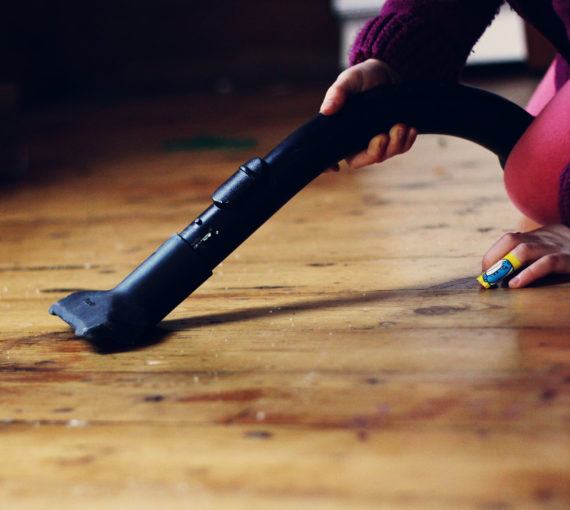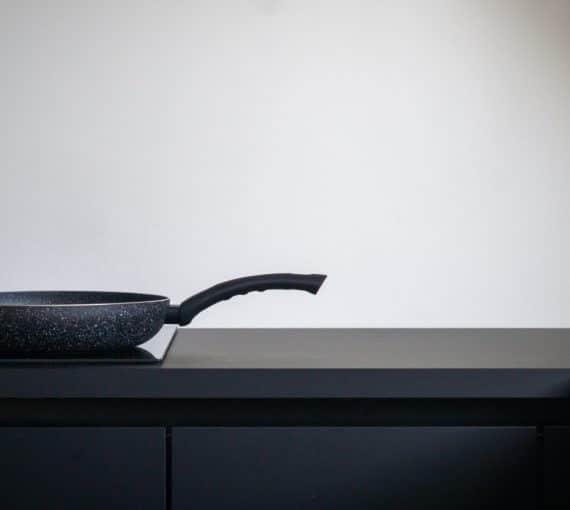
More wildfires from global heating and pollution from traffic and industry challenge air quality indoors and out. You can help improve both. (Photo: DESIGNECOLOGIST via Unsplash)
Changing weather patterns continue to create conditions for longer wildfire seasons — a stark reminder of the escalating climate crisis. Compounded by pollution from society’s reliance on fossil fuels and hazardous substances, this brings longer and more frequent periods of dangerous air quality.
Protect yourself and your loved ones: safeguard your indoor air.
The best way to keep indoor air clean is to do everything possible to keep outdoor air clean, such as by slashing carbon emissions that cause global heating and reducing use of toxic chemicals. Cleaner air, a stable climate and a toxic-free environment make for healthier building interiors.
Health effects of wildfire smoke and air pollution
Of all the pollutants in wildfire smoke, particulate matter (tiny solid and liquid droplets suspended in the air) poses the greatest health threat to people of all ages. Inhaling them can irritate the respiratory tract, causing coughing, wheezing and shortness of breath. Prolonged exposure has been linked to reduced lung function and chronic respiratory diseases. Different people respond differently to smoke, and some may be at higher risk for more severe symptoms.
A globally recognized major contributor to disease and premature death, air pollution is the largest environmental risk to human health. According to the Global Burden of Disease project, it’s the world’s fifth leading mortality risk and can impair lung function, increase risk of respiratory infections, and cause cardiovascular problems, allergies and asthma. In fact, air pollution accounts for up to ten million premature deaths per year.
Follow local health advisories and take these steps to minimize your exposure.
How to protect yourself from wildfire smoke and air pollution
Plentiful fresh air is essential for good health. But when air quality plummets because of pollution or smoke from wildfires:
- Follow public health and safety guidelines. Stay up- to- date on your local health authority’s recommendations.
- Stay indoors. If you can’t be at home or if you have precarious housing, visit your local community centre, library or shopping mall. Choose locations that tend to have cleaner, cooler indoor air.
- Stay hydrated.
- Wear a mask. Particulate respirators, such as N95 or P100 masks, will help protect your lungs from particulate matter in wildfire smoke but not against harmful gases.
- Avoid strenuous activities. The harder you breathe, the more you inhale.
- Pay attention to your health.
- Help your neighbours. Not everyone knows the hazards of indoor air pollution or what to do about it.
Easy ways to improve indoor air quality
Whether you’re at home, school or work, these temporary measures can help with smoky air from wildfires.
Start by closing windows, doors and vents (but leave interior doors open to encourage ventilation between rooms).
The three solutions below each use a high-end, ultra-allergen furnace filter (e.g., 3M’s Filtrete, with filtration level of 1900, 2200 or 2800, or other brand of filter with MERV rating of 13 or up).
If you have a forced-air furnace, heat pump system or central HVAC system
- Replace the filter with a new, high-quality, ultra-allergen filter that’s compatible with your unit. Install it so air flow is as shown on the filter.
- Set the fan to operate continuously. (Furnaces or thermostats usually have manual settings for this.) Confirm that air is flowing to the vents.
- This will filter air in several rooms of the house.
If you have a box fan
- Find a high-end filter the same size as your fan.
- Tape the two together, making sure you get the direction of the filter correct. (Arrows show which way the air should be pushed through the filter.)
- This video shows how.
If you have a standard fan
- Cut a circular opening matching the fan’s size in one end of a box and either cut an opening or open the flaps at the opposite end. Attach the fan so the box will be pressurized.
- Tape the high-end filter on the other end.
- Turn on the fan and check that air current is getting through. (The filter slows the flow so you may need to turn up the speed.)
- Be sure the fan doesn’t overheat.
Fans use energy, so only run them when necessary.
If you are often exposed to smoke, use a high-efficiency particulate air filter. HEPA filters vary in effectiveness, so check independent ratings. Many units can only improve air quality in one room. Avoid air purifiers that generate ozone, which can cause health problems.
Buildings built to exacting energy-efficiency standards, such as Passivhaus, use heat recovery or energy recovery ventilators. Because these homes are airtight, make sure equipment operates according to specifications so air exchange is sufficient.
More things you can do to reduce indoor air pollution
- Reduce what you track into your house and dust surfaces often.
- Avoid toxic chemicals.
- Choose products that don’t off-gas, such as eco-friendly mattresses and pillows.
- Swap your gas stove for an induction stove or portable induction cooktop.
Can indoor plants improve air quality?
There’s lots of reasons to fill your space with houseplants (e.g., they’re beautiful). But cleaning indoor air isn’t one of them.
Thanks in part to a 1980s NASA study, people started touting various plants for their abilities to cleanse the air of everything from “volatile organic compounds” to ozone to dust and spores. But that study examined the effects of plants in closed environments, without any leaks, windows or doors. More recent research shows even a dense houseplant jungle has little effect on indoor air quality.
Clean indoor air by cleaning outdoor air
Trees are natural air purifiers and play a vital role in reducing air pollution and improving air quality. One tree can absorb approximately five kilograms of air pollution annually and produce enough oxygen to support two people. Trees also intercept airborne particles by retaining them on their leaves, removing eight to 12 grams of air pollutants per square metre of canopy per year.
Protect the air you breathe by protecting trees. Hold Canada accountable for protecting nature.



